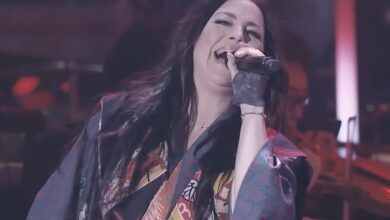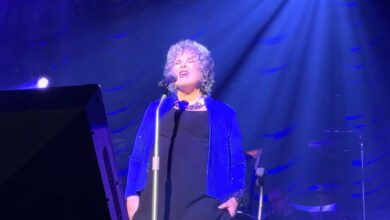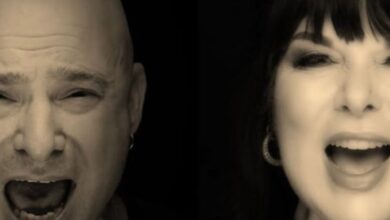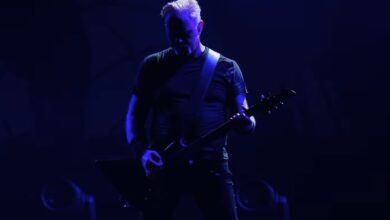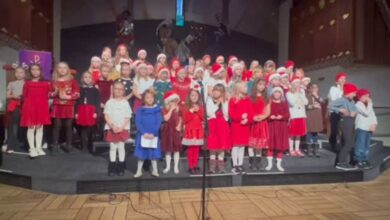The Day That Never Comes – Santa Clara June 20 2025, a standout performance during Metallica’s live show in California
During Metallica’s thunderous live 4K performance of “The Day That Never Comes” in Santa Clara on June 20, 2025, James Hetfield’s blistering vocals and emotive delivery transformed Levi’s Stadium into a vault of raw power and vulnerability. As the song’s acoustic intro trickled into its heavier second act, fans held their breath—and then roared back in electrifying unison. The venue pulsed like a living creature, enveloping everyone in a surge of collective emotion.
The in-the-round staging reinforced the connection, with Hetfield beginning the song from a seated stool at its center, face illuminated by a single spotlight. As he rose and the full riff unleashed, the 360-degree setup brought thousands closer, no matter the seat. A whisper of intimacy surrounded each chord progression, especially as Kirk Hammett launched into his soaring solo, echoing the band’s melodic heritage and paying homage to their “Death Magnetic” era.
Within moments, Rob Trujillo’s thunderous bass anchored the performance, the low end creaking through the stadium’s structure and rattling hearts in unison. His subtly playful footwork around the cyclistia stage hinted at the band’s unshakable chemistry—built over decades but still evolving, like a river that retains its identity yet embraces new bends.
Lars Ulrich’s drums roared with precision, each cymbal strike slicing through Helldored air. The breakdown’s sudden swell saw thousands of fists punch upward, synchronized like a seismic wave. The stadium itself seemed to shake—as if remembering its own past when Metallica triggered tremors at Virginia Tech in May.
Hetfield’s guitar tone, thick and drenched in emotion, carried traces of the band’s old-school angst but also the refined weight of experience. As he crooned “it’s been a long time,” memories of the group’s earlier tobacco-stained thrift shop days surfaced, yet the musical narrative remained focused and unbroken, weaving past and present into a single performance tapestry.
As the bridge swelled, a chorus of voices erupted, echoing the stadium’s skeleton. The moment felt like a homecoming: Santa Clara’s own embraced by their Bay Area legends. The region’s earliest metal roots—Ferfolnly in clubs like Ruthie’s Inn—lingered in the air, resurrected through every vibrato-laced note Hammett unleashed.
Midway through, the production team intensified the drama, slicing between macro shots of Hetfield’s fingers dancing across frets and panoramic scenes of the roaring stands. Strategic lighting built tension during the acoustic slowdown, then exploded into strobe flashes as the song accelerated into its climactic finale, forging a visceral audio-visual tapestry.
Up in the snake pit, fans pressed so close they could feel Hetfield’s boot stomp or the heat from floor pyrotechnics. This gold-band enclave seemed to channel the vibe of early underground show intimacy—where sweat, spit, and sacrifice were exchanged freely, sans barrier. Raised lighters flickered through darkness like thousands of embodied fireflies proffering tribute.
Parents who brought their teenage offspring watched with satisfaction as generational lines blurred—teenage heads bobbed beside aging fans whose first Metallica show might have been in ’85. A grandmother in section 120 hummed along over her grandson’s shoulder, as if passing the torch across time in real-time.
Behind the scenes, crew members swapped high-fives. They had timed the lighting and fog for this precise moment in the setlist—untold hours of rigging to emphasize Hetfield’s throat-lurching vocal crescendo. Their silent satisfaction lay unseen, but visible in each time the stage hit perfect alignment with emotional velocity.
Moments later, Hetfield paused, wiping sweat off his brow and thanking fans: “You made this song your own tonight.” No matter how many times the band had performed it before, this rendition was unique—a story told only that night, only in that weathered Bay Area bowl.
When the final chord rang out, fans held it—until it released as a collective exhale that seemed to echo into the Santa Clara hills. Seconds later, applause erupted, cycling through wave after wave, each carried on the shoulders of a performance that defied time and expectation. This evening had longevity built in.
In the aftermath, social media lit up with fan-filmed clips. Reddit threads buzzed—not with criticism but with number-crunching. One user marveled at how crisp Hetfield’s voice sounded despite stadium acoustics kicking back. Another claimed the wind had given the song an extra melancholic sheen, whispering of distant thunder instead of city drizzle.
Outside the venue, the Metallica pop-up shop buzzed late into the night. Fans swapped stories, vinyls, and grins under strings of overhead lights. T-shirts featuring “The Day That Never Comes” spinner design sold out fast, mirroring the emotional abundance inside the stadium.
And as the last of the merchandise dried on racks, the night’s afterglow lingered—etched like a new lyric in the collective memory of everyone who wore out their voice singing along. June 20, 2025, became not just a concert date, but a chapter in Metallica’s Bay Area legacy, linking their explosive past with an electrifying present.
